Selected Publications
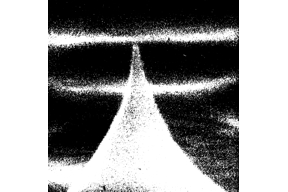
W. I. Karain, Larry V. Knight, and David D. Allred (et al.)
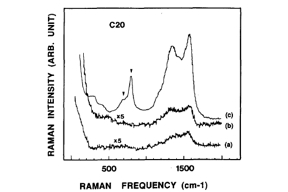
D. D. Allred and Qi Wang (et al.)
Tungsten/carbon (W/C) multilayer thin films were prepared by dc magnetron sputtering. All samples consisted of 30 layer pairs with a nominal d spacing varying from 2.5 to 14 nm, the W layer thickness was kept at 2 nm in all samples. The W/C multilayers were subjected to isochronal anneals in a quartz tube furnace at the temperature range from 500 to 950 °C under a flow of high purity Ar gas. X‐ray diffraction, Raman scattering, and Auger depth profile were used to characterize the structure of the as‐prepared and annealedmultilayerfilms. Both the W and C layers appear to be amorphous as‐prepared. An overcoat of 30 nm of plasma enhanced chemical vapor deposited silicon nitride was found to inhibit oxidation during annealing. For those multilayers containing thinner carbon layers (<1 nm), the formation of crystalline W2C occurs at annealing temperature as low as 500 °C and a very small expansion (<2%) in the layer d spacing is observed. On the other hand, for all multilayers with carbon layer thickness equal or greater than 2 nm, crystallization occurs at much higher annealing temperatures and the crystalline phases observed were alpha‐W and WC. It is also observed that in the latter group the period increases monotonically with increasing annealing temperature, the total expansion is about 10% and affects both W and C layers approximately equally. The expansion stops at the crystallization temperature which occurs at 900 °C or higher. The expansion is under investigation but may be interpreted as due to the structural ordering processes in the amorphous W and C layers.
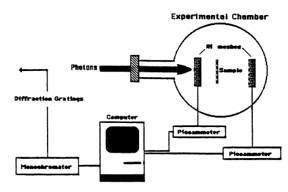
Memorie K. Williams, Evan Hansen , and David D. Allred (et al.)
Soft x-ray filter designs for the Brigham Young University `Goldhelox Project' are discussed. Three polymers intended for use as a supportive substrate for a soft x-ray solar filter having a passband centered at 171 angstroms are examined. The use of polymer substrates is examined because of vibrational and mechanical stresses associated with the shuttle launch, preventing the use of a free standing filter, and because of Goldhelox's special need to locate the filter near the imaging plane. The uniform consistency of a polymer support prevents any imaging of the filter support structure, as would occur if a traditional mesh support were used. The polymer substrates investigated are: AP-1, Formvar, and polypropylene. Their transmissive characteristics of the polymers are examined along with the feasibility of their use. Transmission as a function of energy for each polymer is given over an energy range of 10 to 180 eV.
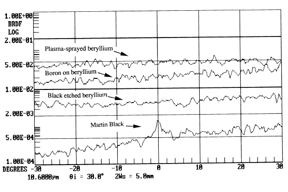
David D. Allred (et al.)
Infrared optically black baffle surfaces are an essential component of many advanced optical systems. All internal surfaces in advanced infrared optical sensors that require stray light management to achieve resolution are of primary concern in baffle design. Current industrial materials need improvements to meet advanced optical sensor systems requirements for optical, survivability, and endurability. Baffles are required to survive and operate in potentially severe environments. Robust diffuse-absorptive black surfaces, which are (1) thermally and mechanically stable to threats of X-ray, launch, and in-flight maneuver conditions, with specific densities to allow an acceptable weight load, (2) handleable during assembly, (3) cleanable, and (4) adaptive to affordable manufacturing, are required as optical baffle materials. An overview of recently developed advanced infrared optical baffle materials, requirements, manufacturing strategies, and the Optics MODIL (Manufacturing Operations Development and Integration Laboratory) Advanced Baffle Program is discussed.
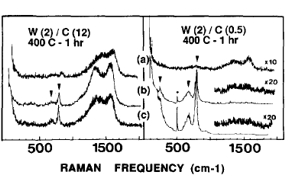
Qi Wang and D. D. Allred (et al.)
W/C multilayers were prepared on unheated Si substrates by RF sputtering method. Raman scattering, x-ray diffraction and Auger depth profile were used to characterize the structure of the as-prepared and annealed multilayers in the range of 300 to 800 C. The results were compared in samples subjected to three different annealing conditions: 1) in air, 2) in high purity Ar atmosphere and 3) in evacuated and sealed (approximately 10(-4) torr) ampules. The result of Auger profiles indicates that the penetration depth of oxygen in the films depends on the annealing conditions, annealing temperature and layering structure. It also shows the loss of compositional modulation and the oxidation of W in the region reached by the oxygen. Raman scattering from the oxidized top layer(s) displays a spectrum with lines associated with crystalline tungsten oxide and segregated microcrystalline graphite particles
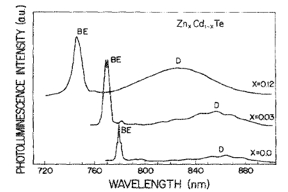
D. D. Allred (et al.)
Zinccadmium telluride (Zn x Cd1−x Te ) solid solutionfilms with 0≤x≤0.12 were deposited by the close spaced vapor transport method and characterized using photoluminescence, x‐ray diffraction, and scanning electron microscopy. The two former techniques indicate that films with high crystalline quality can be prepared with moderate substrate temperatures and low argon pressures. Under these conditions deposition rates of up to 1000 Å/s are achieved and Zn concentration in the film is the same as that of the source. The electron micrographs show grain sizes comparable to the film thickness.